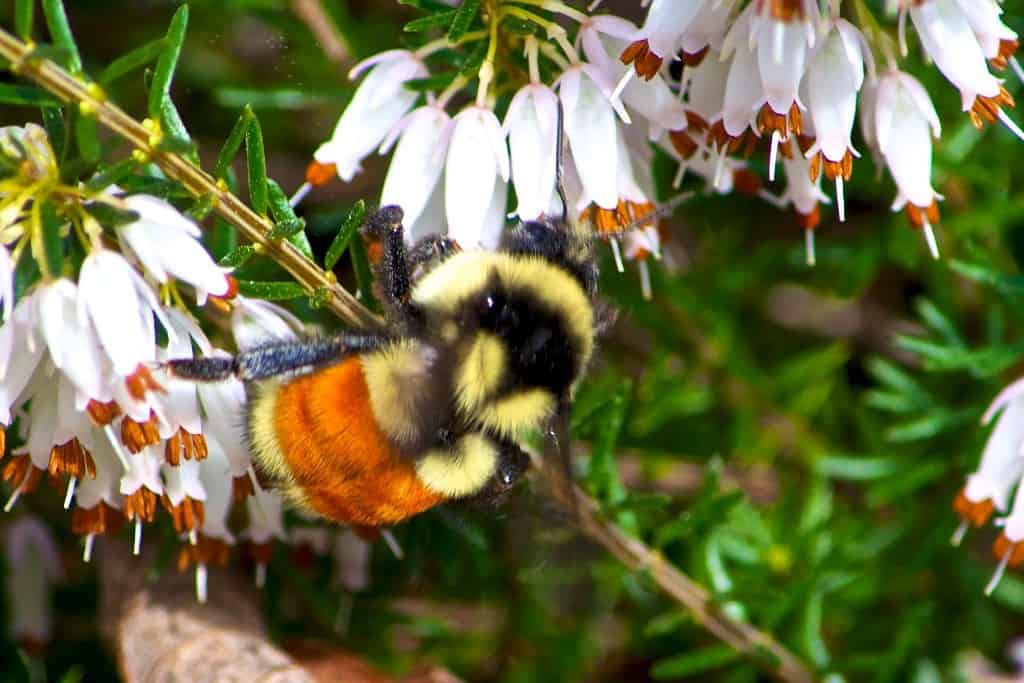Orange coloured bees aren’t unusual; often the yellow stripes of more common bees can appear dark and almost orange-like in colour. These five bees, however, are vibrantly orange and stand out from the crowd. Bright colours and stripes are usually a sign to potential predators that they have a stinger and aren’t afraid to use it; the use of colour and patterns as a warning sign is known as aposematism.
Patagonian bumblebee; Bombus dahlbomii
One of the largest species of bees in the world, the Patagonian bumblebee is a bright orange-red over its whole body. They’re native to southern Chile and Argentina, and like other bumblebee species they are social and have a queen bee. The queen will seek out an abandoned ground burrow such as an old mouse nest. She will forage for pollen and nectar and lay eggs; she will have mated in the fall and the eggs are fertilized. Once worker bees have emerged, they will take over the duties of gathering pollen and nectar, and the queen will focus on rearing young. The colony will have an average of 100 members at any time.
Unfortunately, the introduction of other bumblebee species for commercial growing operations has caused a significant decline in the Patagonian bumblebee and is now considered endangered.
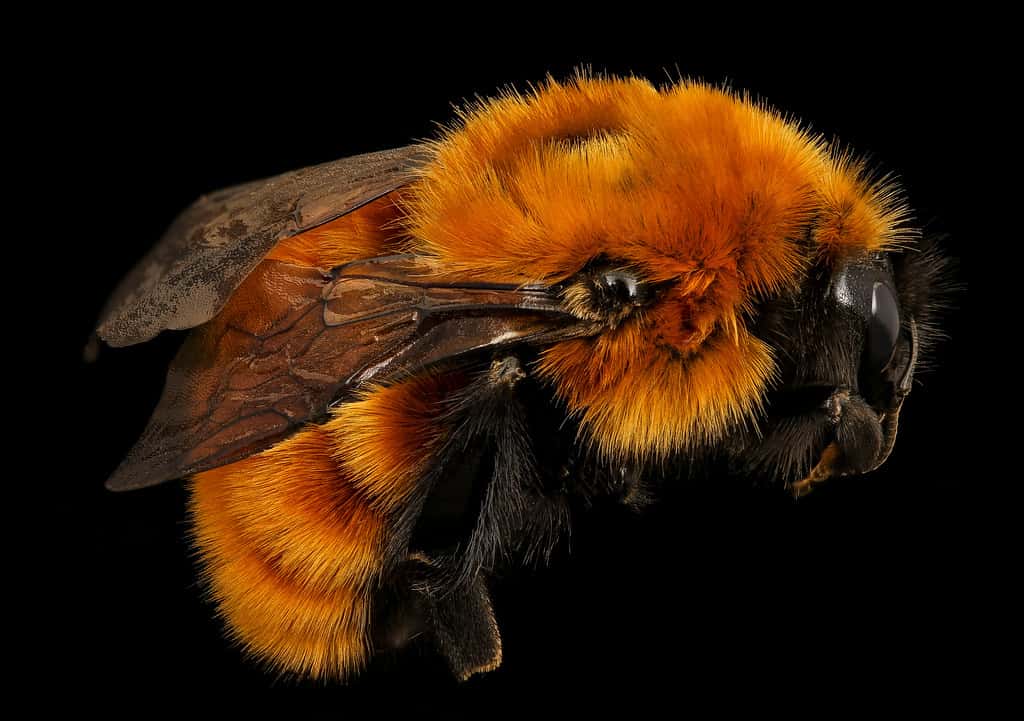
Fire-tailed Resin Bee; Megachile mystacaena
Native to Australia, this bee has a black head and thorax, but its abdomen is a brilliant orange, almost giving it a firefly-like appearance. It is a solitary bee that nests in pre-existing wooden holes or old wasp nests. It has even been found to make homes in the folds of clothing. The mother bee will use resin or mud to build its nest for laying eggs.
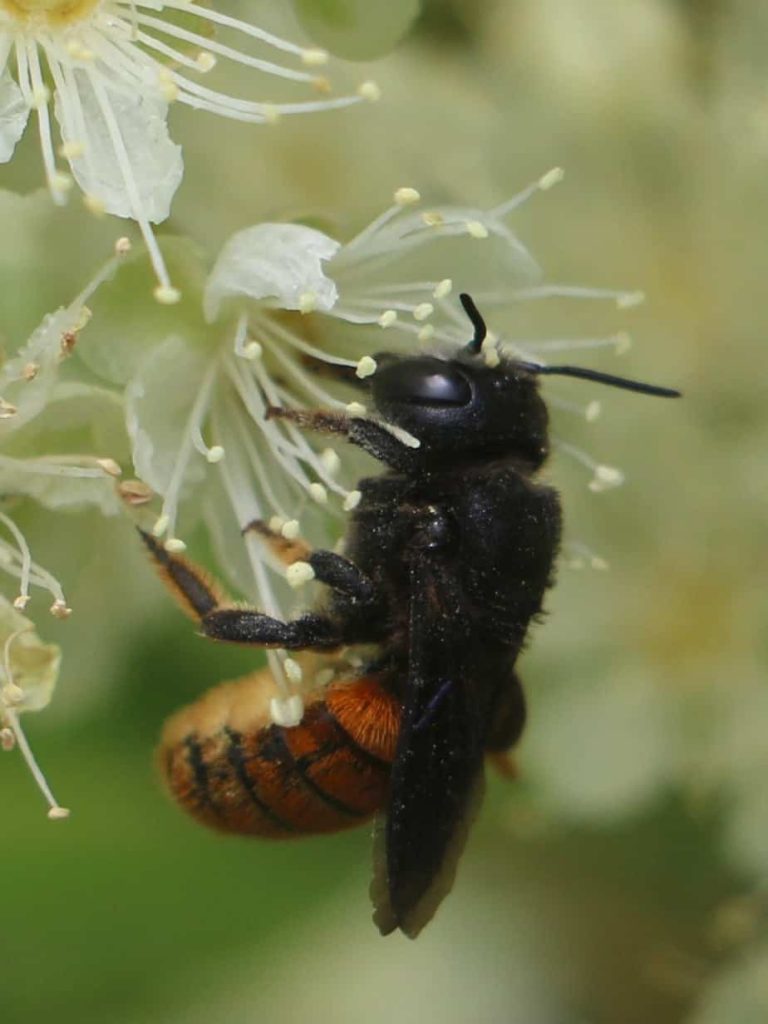
Teddy bear bee; Amegilla bombiformis
Another bee from Australia, this bee is stocky and fuzzy like a bumblebee, but completely covered in orange hair with black stripes on its abdomen. “Bombiformis” is even Latin for “form of a bumblebee”. They are solitary bees that form urn-shaped nests in which they lay their eggs with a pollen pellet and some nectar for the larvae to feed on. At night, the males nest together on stems, latching on to the twig with their mandibles for support.
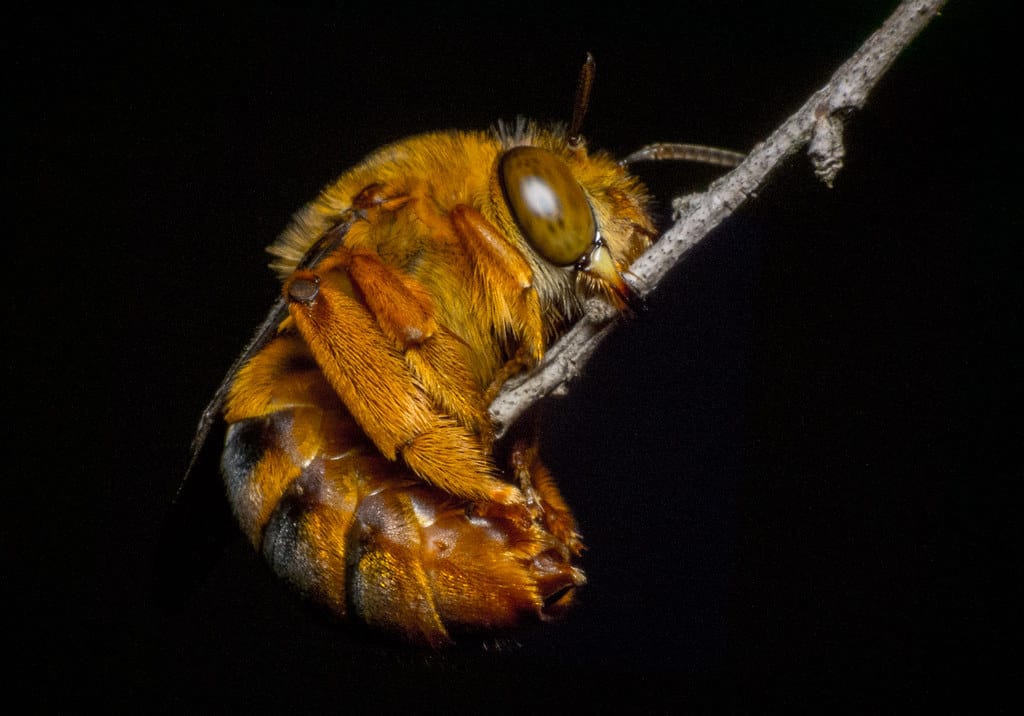
Tawny mining bee; Andrena fulva
These solitary bees have reddish-orange hair covering the top of their thorax and abdomen, and live across Europe, ranging from the UK to the Balkans. They live in communities where many bees will live in close proximity to one another but will care for only their own nest. As the name suggests, the bees burrow in the ground and dig chambers for individual cells. Similar to other solitary bees, the males will mate with the females after hatching and then die soon after. The females are entirely responsible for building the nests and collecting pollen.
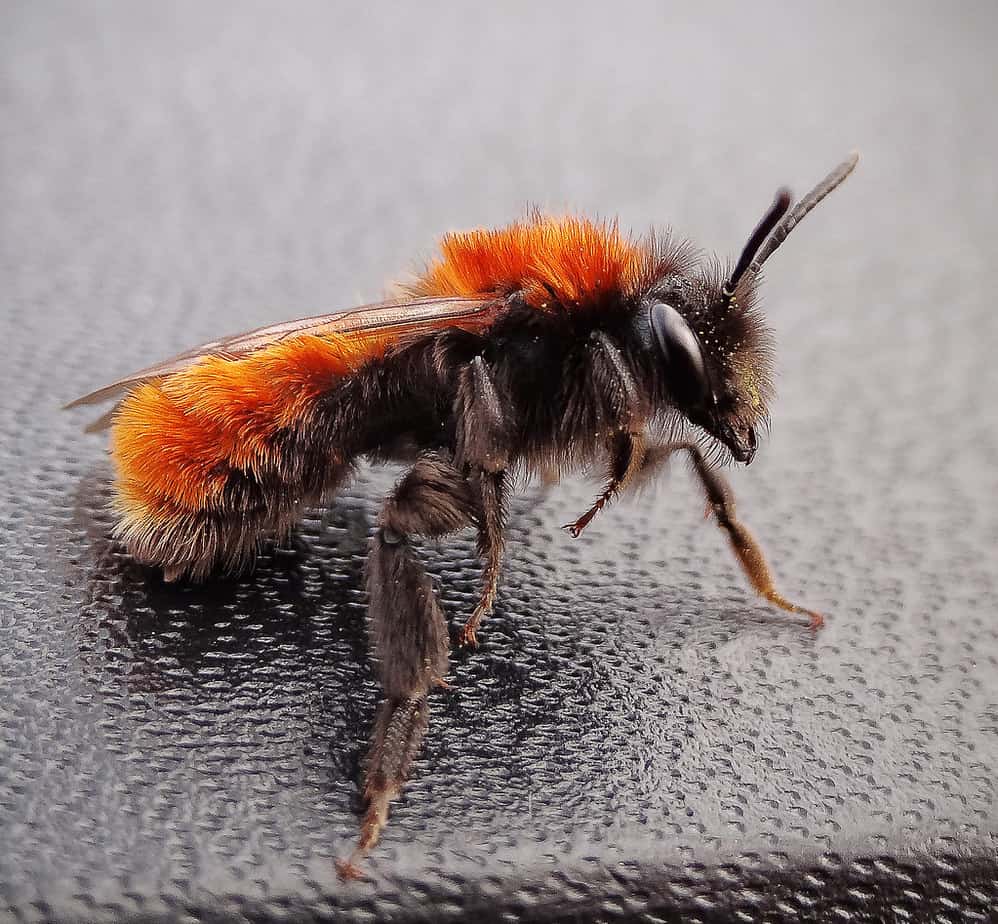
Orange belted bumblebee; Bombus ternarius
Also known as the tricoloured bumblebee, these bees are endemic to most of Canada and the northeastern US. Their orange belt is present on their thorax, and the rest of the bee is striped black and pale yellow. Their lifecycle is very similar to that of the Patagonian bumblebee, as well as most other bumblebee species; the queen emerges, makes a nest, forages for food, and then lays the eggs for workers that will eventually take over the foraging for her. In the fall, she will lay the egg for a queen to replace her. The young queen will hatch, mate, and then go into hibernation for the winter, while the rest of the hive will die. These social bees will fly up to 6 kilometres in search of food, and are great pollinators.
